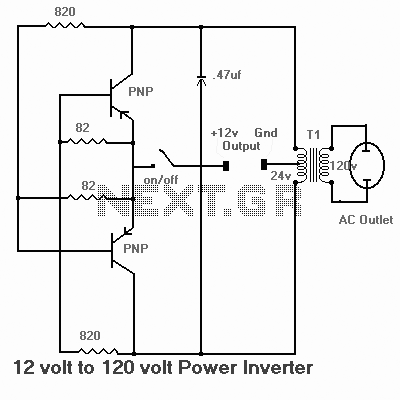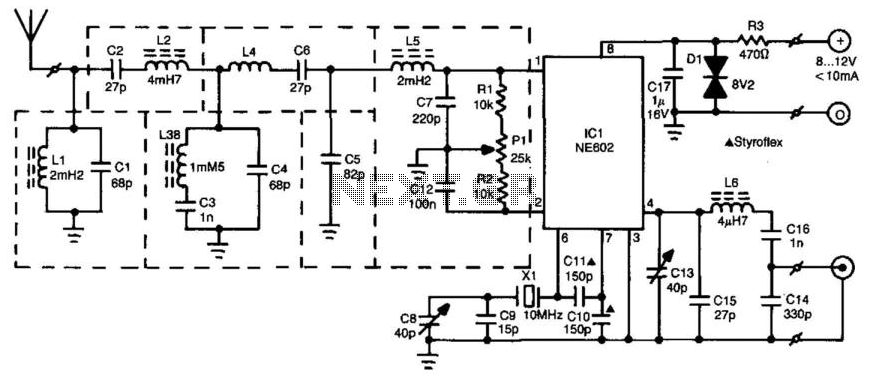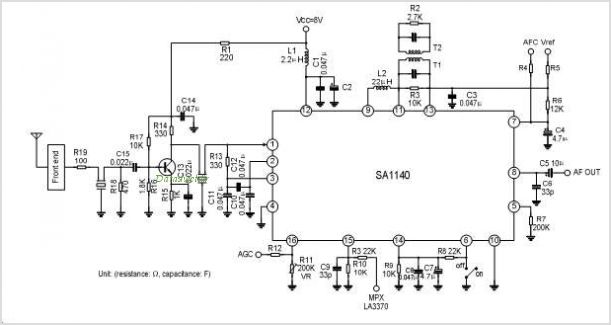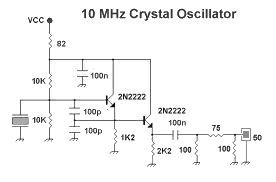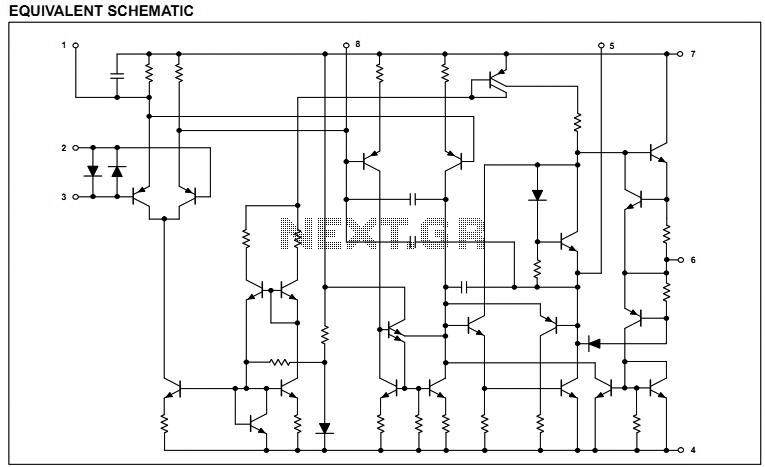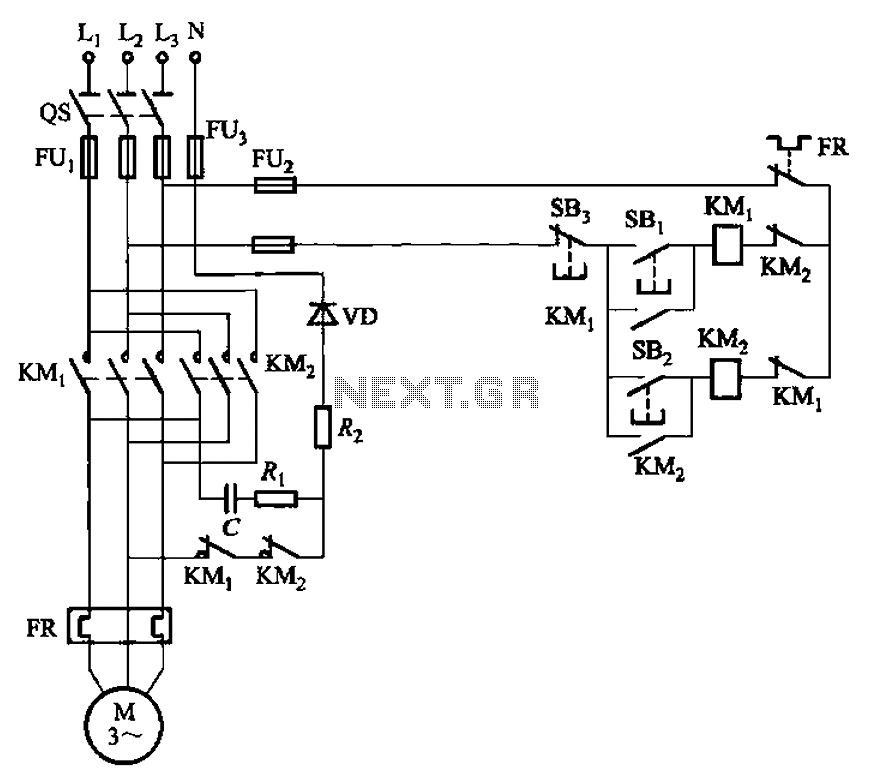
Crystal Radio Circuits
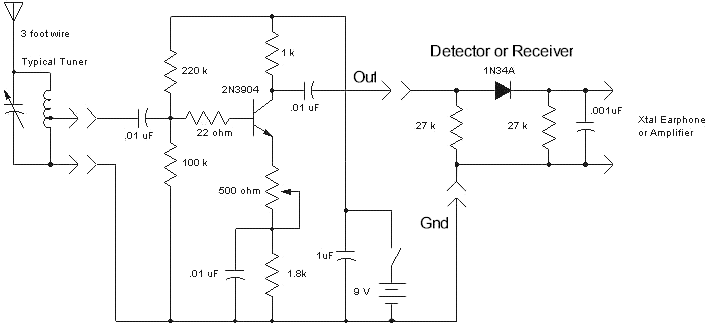
The crystal radio derives its name from the galena crystal (lead sulfide) utilized for rectifying signals. A "cat's whisker" wire contact was adjusted on the crystal's surface until a diode junction was established. The 1N34A germanium diode serves as a contemporary replacement for galena, while most other small-signal germanium diodes are also suitable. Silicon diodes are generally not recommended due to their significantly higher barrier potential, which necessitates larger signals for effective rectification. Certain silicon Schottky diodes with low barrier potentials may perform adequately, but most small-signal Schottky diodes do not match the performance of standard germanium diodes. Although the circuit is relatively straightforward, numerous challenges can arise for beginners. The most critical precaution involves the outdoor antenna; a long, elevated antenna is optimal, but the risks associated with bringing such wiring indoors must be fully understood. Lightning strikes to the antenna can lead to the destruction of the crystal radio, and without appropriate measures, more severe damage may occur. The ideal approach is to incorporate a commercial lightning arrestor, connected to a robust ground wire that leads to a buried water pipe. Simply disconnecting the antenna from the receiver during thunderstorms is insufficient. Other challenges, while less hazardous, pertain to the receiver's performance. A frequent error in constructing a crystal radio is excessive loading of the tuned circuit. Maintaining a high Q factor for the tuned circuit is essential for selectivity; otherwise, strong radio stations may interfere with one another. A well-designed circuit typically includes low-impedance taps on the inductor for connections to the antenna and diode, as illustrated in the schematic. A long wire antenna with a solid ground connection connects to the lowest impedance tap, while a shorter antenna without a ground may connect to a higher tap. The diode can be repositioned across various taps and even along the coil for optimal sensitivity. Antenna and diode connections can be made using alligator clips for ease of experimentation. The earphone presents another potential issue, as not all crystal earphones exhibit sufficient sensitivity; thus, testing multiple options is advisable to find a suitable one. High-impedance dynamic earphones tend to be more reliable and can yield excellent results. An old telephone receiver or a modern portable tape player headset may serve well if they are high-Z and sensitive. Low-impedance earphones, commonly used with portable radios, are unsuitable. A simple test involves holding one earphone wire between fingers while scraping the other lead across a large metal object, such as a file cabinet. If static is heard, the earphone is likely compatible with the crystal radio. The variable capacitor is frequently misconnected; it is important to connect the rotor to ground and the stator to the "hot" side of the coil. Incorrect connections can lead to detuning when the capacitor knob is adjusted. If detuning occurs, reversing the connections may resolve the issue. Some builders may consider omitting the 82k resistor, which discharges the capacitor, under the misconception that it consumes valuable signal power. While this may yield some performance in a typical germanium diode due to significant leakage, the results will be unpredictable. A dynamic earphone may be DC coupled, thus eliminating the need for the resistor. The coil can be wound on a 1.5-inch PVC pipe coupler, which typically has an outer diameter of approximately 2.2 inches. Two small holes should be drilled at each end to secure the coil's ends. The wire type is not critically important, but a gauge and insulation should be chosen so that 65 turns cover about two-thirds of the coupler. A suitable choice is 30 AWG "wrap" wire from Radio Shack, typically available in 50-foot lengths on small spools, with about 37 feet required for the prototype.
The crystal radio circuit operates by utilizing a resonant LC circuit formed by the inductor and capacitor, allowing it to tune into specific radio frequencies. The inductor is constructed with a specific number of turns, which can be adjusted based on the desired frequency range. The capacitor is adjustable, enabling fine-tuning of the circuit to select different stations. The diode rectifies the radio frequency signals, converting them into audio frequencies that can be heard through the earphone.
To enhance performance, the design may include additional components such as a variable resistor or potentiometer to adjust the sensitivity of the diode. The ground connection is crucial for optimal operation; it should be as low-resistance as possible to minimize noise and improve signal clarity.
Antenna design can vary, with options including long wire antennas or loop antennas, each offering different performance characteristics based on the environment and available space. Proper grounding techniques and protection against electrical surges, such as lightning arrestors, are essential to safeguard the circuit and ensure longevity.
In summary, the crystal radio circuit is a simple yet effective design that requires careful attention to component selection, connections, and environmental factors to achieve optimal performance. Proper experimentation and adjustments can lead to a successful and enjoyable radio experience.The crystal radio gets its name from the galena crystal (lead sulfide) used to rectify the signals. A "cat`s whisker" wire contact was moved about the surface of the crystal until a diode junction was formed. The 1N34A germanium diode is the modern substitute for galena and most other germanium small-signal diodes will also work well.
Silicon diod es are not a good choice because their much higher barrier potential requires larger signals for efficient rectification. Certain silicon Schottky diodes with low barrier potential will work well but most small-signal Schottky diodes will not perform as well as a garden-variety germanium diode.
The circuit is quite simple but many pitfalls await the novice. The first precaution is most important! The crystal radio works best with a long, high outdoor antenna but the beginner may not fully appreciate the danger of bringing such a wire into the house. Lightning strikes to the antenna will probably destroy the crystal radio but if precautions are not taken, much more damage will result.
The best strategy is to incorporate a commercial lightning arrestor with a straight, heavy gauge ground wire leading down to a buried water pipe. It is not sufficient to disconnect the antenna from the receiver during thunderstorms. Other pitfalls are less dangerous and relate to the receiver`s performance. A common mistake when building a crystal radio is to load the tuned circuit excessively. The Q of the tuned circuit must remain high to give selectivity or strong radio stations will all mix together.
A good design will usually have low-impedance taps on the inductor for connections to the antenna and diode as shown in the schematic. A long wire antenna with a good ground connection will connect to the lowest impedance tap whereas a shorter antenna with no ground connection may connect to a higher tap.
The diode may be experimentally moved to different taps and even across the whole coil for maximum sensitivity. The antenna and diode connection may be made with alligator clips for easy experimentation. Another potential problem area is the earphone. Not all crystal earphones are sensitive and the experimenter should test a few to get a "good" one. High impedance dynamic earphones are a bit more reliable and can give excellent results. Try an old telephone receiver or a modern portable tape player headset (some are high-Z and fairly sensitive).
Low impedance earphones like those used with many portable radios will not work at all. A simple test is to hold one earphone wire between the fingers while scraping the other lead across a large metal object like a file cabinet. If static is heard in the earphone it will probably work well with the crystal radio. The variable capacitor is often connected incorrectly. Make sure to connect the rotor to ground and the stator to the "hot" side of the coil. Otherwise, the radio will detune when the capacitor knob is touched. If detuning is noticed then try reversing the connections. Some experimenters are tempted to omit the 82k resistor which discharges the capacitor on the theory that it wastes precious signal power.
With a typical germanium diode, this little "improvement" may work somewhat but only because the diode has significant leakage and the performance will not be predictable. A dynamic earphone may be DC coupled eliminating the need for the resistor. The coil may be wound on a 1. 5 inch PVC pipe coupler as shown in the drawing. These typically have an outer diameter of about 2. 2". Drill two small holes at each end to secure the ends of the coil. The wire type is not particularly critical but select a gauge and insulation so that the 65 turns cover about 2/3 of the coupler.
An excellent choice is 30 AWG "wrap" wire from Radio Shack. The prototype uses this solid conductor wire with blue insulation. This wirewrap wire is available in 50` lengths on little spools and about 37` will be needed. A 🔗 External reference
The crystal radio circuit operates by utilizing a resonant LC circuit formed by the inductor and capacitor, allowing it to tune into specific radio frequencies. The inductor is constructed with a specific number of turns, which can be adjusted based on the desired frequency range. The capacitor is adjustable, enabling fine-tuning of the circuit to select different stations. The diode rectifies the radio frequency signals, converting them into audio frequencies that can be heard through the earphone.
To enhance performance, the design may include additional components such as a variable resistor or potentiometer to adjust the sensitivity of the diode. The ground connection is crucial for optimal operation; it should be as low-resistance as possible to minimize noise and improve signal clarity.
Antenna design can vary, with options including long wire antennas or loop antennas, each offering different performance characteristics based on the environment and available space. Proper grounding techniques and protection against electrical surges, such as lightning arrestors, are essential to safeguard the circuit and ensure longevity.
In summary, the crystal radio circuit is a simple yet effective design that requires careful attention to component selection, connections, and environmental factors to achieve optimal performance. Proper experimentation and adjustments can lead to a successful and enjoyable radio experience.The crystal radio gets its name from the galena crystal (lead sulfide) used to rectify the signals. A "cat`s whisker" wire contact was moved about the surface of the crystal until a diode junction was formed. The 1N34A germanium diode is the modern substitute for galena and most other germanium small-signal diodes will also work well.
Silicon diod es are not a good choice because their much higher barrier potential requires larger signals for efficient rectification. Certain silicon Schottky diodes with low barrier potential will work well but most small-signal Schottky diodes will not perform as well as a garden-variety germanium diode.
The circuit is quite simple but many pitfalls await the novice. The first precaution is most important! The crystal radio works best with a long, high outdoor antenna but the beginner may not fully appreciate the danger of bringing such a wire into the house. Lightning strikes to the antenna will probably destroy the crystal radio but if precautions are not taken, much more damage will result.
The best strategy is to incorporate a commercial lightning arrestor with a straight, heavy gauge ground wire leading down to a buried water pipe. It is not sufficient to disconnect the antenna from the receiver during thunderstorms. Other pitfalls are less dangerous and relate to the receiver`s performance. A common mistake when building a crystal radio is to load the tuned circuit excessively. The Q of the tuned circuit must remain high to give selectivity or strong radio stations will all mix together.
A good design will usually have low-impedance taps on the inductor for connections to the antenna and diode as shown in the schematic. A long wire antenna with a good ground connection will connect to the lowest impedance tap whereas a shorter antenna with no ground connection may connect to a higher tap.
The diode may be experimentally moved to different taps and even across the whole coil for maximum sensitivity. The antenna and diode connection may be made with alligator clips for easy experimentation. Another potential problem area is the earphone. Not all crystal earphones are sensitive and the experimenter should test a few to get a "good" one. High impedance dynamic earphones are a bit more reliable and can give excellent results. Try an old telephone receiver or a modern portable tape player headset (some are high-Z and fairly sensitive).
Low impedance earphones like those used with many portable radios will not work at all. A simple test is to hold one earphone wire between the fingers while scraping the other lead across a large metal object like a file cabinet. If static is heard in the earphone it will probably work well with the crystal radio. The variable capacitor is often connected incorrectly. Make sure to connect the rotor to ground and the stator to the "hot" side of the coil. Otherwise, the radio will detune when the capacitor knob is touched. If detuning is noticed then try reversing the connections. Some experimenters are tempted to omit the 82k resistor which discharges the capacitor on the theory that it wastes precious signal power.
With a typical germanium diode, this little "improvement" may work somewhat but only because the diode has significant leakage and the performance will not be predictable. A dynamic earphone may be DC coupled eliminating the need for the resistor. The coil may be wound on a 1. 5 inch PVC pipe coupler as shown in the drawing. These typically have an outer diameter of about 2. 2". Drill two small holes at each end to secure the ends of the coil. The wire type is not particularly critical but select a gauge and insulation so that the 65 turns cover about 2/3 of the coupler.
An excellent choice is 30 AWG "wrap" wire from Radio Shack. The prototype uses this solid conductor wire with blue insulation. This wirewrap wire is available in 50` lengths on little spools and about 37` will be needed. A 🔗 External reference
